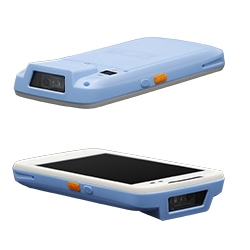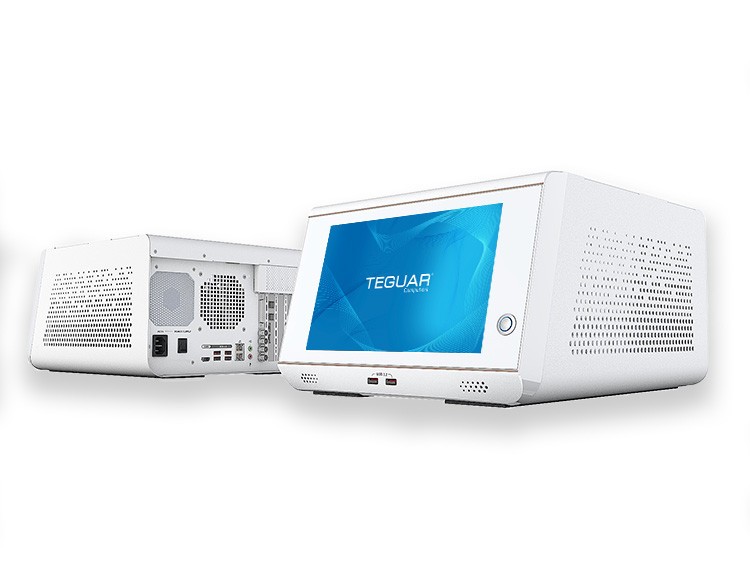Medical PC Hardware Designed for Telehealth
Telehealth is connecting networks of healthcare providers to each other and to their patients. Inside medical networks, clinicians are using mobile medical computers and tablets to access and load patient data and connect with other healthcare providers. Telehealth gives patients access to medical care from the comfort of their own homes, increasing the affordability and accessibility of healthcare. A third area, where telehealth is vital, is in emergency management and first response situations. Whether communication is needed among a network of nurses, with a remote patient, or with first responders in the field, there are several key hardware features needed for medical tablets and computers.
Telehealth in Healthcare Environments
 Telehealth technology allows medical providers to access and record patient data, order prescriptions, schedule appointments and contact other clinicians. Medical workstations on wheels (WOWs) and medical tablets are two ways that clinicians use telehealth within their healthcare facilities. A key feature for these PCs is their ability to connect and integrate with peripherals. Telehealth computers and tablets have a wide array of I/Os and often have expansion areas, where peripherals, such as barcode scanners and smart card readers, can be incorporated into the device.
Telehealth technology allows medical providers to access and record patient data, order prescriptions, schedule appointments and contact other clinicians. Medical workstations on wheels (WOWs) and medical tablets are two ways that clinicians use telehealth within their healthcare facilities. A key feature for these PCs is their ability to connect and integrate with peripherals. Telehealth computers and tablets have a wide array of I/Os and often have expansion areas, where peripherals, such as barcode scanners and smart card readers, can be incorporated into the device.
Telehealth PCs must be ergonomic, have a long life power supply, and also have high performing processors to run demanding software. One way Teguar’s telemedicine PCs accomplish all of this is with hot-swappable batteries. This feature allows the PC to stay light weight, abandoning the use of big, heavy batteries, but still provides a constant power source for the PC or Medical Tablet. Mobile workstations help healthcare teams stay connected and speed up patient care by integrating all the healthcare technology needed into one mobile cart or tablet. WOWs can also be used to connect with patients remotely.
Remote Healthcare
Homecare and remote monitoring are growing in the eldercare, chronic disease management, and orthopedic sectors. Aging in place, or at-home healthcare for the elderly, is becoming common, as telehealth technology advances. Even home settings sometimes require medical computers. One feature of medical computers for home-care is a nurse call button, this allows patients to contact a nurse at the push of a button.
 High performance CPUs along with high definition cameras and screens with reliable connection mediums such as Wi-Fi or Ethernet allow support for video chatting when an in-person visit is not possible or not needed. As part of an initiative to expand healthcare for veterans to areas outside of the healthcare facility, VA hospitals are using medical tablets with a “high-definition digital camera, 3D sensors and mHealth software” to monitor wounds and easily track patient data (Wicklund).
High performance CPUs along with high definition cameras and screens with reliable connection mediums such as Wi-Fi or Ethernet allow support for video chatting when an in-person visit is not possible or not needed. As part of an initiative to expand healthcare for veterans to areas outside of the healthcare facility, VA hospitals are using medical tablets with a “high-definition digital camera, 3D sensors and mHealth software” to monitor wounds and easily track patient data (Wicklund).
Patients can be monitored with these tablets and other medical devices too, because they can be configured with isolated I/Os, a differentiating factor from consumer grade PCs. Medically certified PCs with isolated I/Os will not interfere with other electronic equipment or allow interference from electrical equipment to transfer to the patient. IEC 60601-1 4th Edition Certification is the latest medical certification and it provides requirements for isolated I/Os and other important hardware features of medical PCs. These features are common to medical PCs found in hospitals, clinics and in patient’s homes. An area where telehealth technology has unique hardware requirements is in first response situations.
Telehealth in the Field
 In an ambulance, after a natural disaster or even on the battle front, medical tablets are helping first responders stay connected and better serve patients in the field. These tablets need to be rugged, able to withstand bumps, drops, spills and harsh cleaning chemicals. MIL-STD-810 is a rating often given to industrial tablets and ensures the tablet can survive shocks and vibrations that consumer grade tablets cannot. Medical tablets can also be MIL-STD-810 rated, for tough environments that require both rugged and medical grade enclosures.
In an ambulance, after a natural disaster or even on the battle front, medical tablets are helping first responders stay connected and better serve patients in the field. These tablets need to be rugged, able to withstand bumps, drops, spills and harsh cleaning chemicals. MIL-STD-810 is a rating often given to industrial tablets and ensures the tablet can survive shocks and vibrations that consumer grade tablets cannot. Medical tablets can also be MIL-STD-810 rated, for tough environments that require both rugged and medical grade enclosures.
Medical tablets often need to be fully sealed with flat front surfaces, for easy disinfection and to reduce the buildup of debris and germs. Medical tablets for first response situations are IP65 rated for protection against liquids and airborne particles and use in wet and humid weather. For use outdoors, medical tablets also need a wide operating temperature range and sunlight readable screens. Optical bonding and ultra-lcd protection, as well as high brightness LCDs (800 nits), make tablet screens clear and readable in bright sunlight.
These tablets also have features that make them ideal when time is limited. A built-in fingerprint reader, smartcard reader, or RFID can provide a secure fast log in for first responders. Integrated barcode scanners allow clinicians to track inventory or pull up patient charts with the quick click of a button and built-in RFID can also verify patients with a wave of their wristband. Hot-swappable batteries can provide 24/7 operation required for long shifts, when there is no time to recharge the tablet.
One of the most important features of telehealth PCs is connectivity, a vital factor for first response tablets. Patient data can be sent from the ambulance, to the healthcare facility, and then even to the loved ones at home. Wi-Fi, Bluetooth, GPS, 4G LTE, and LAN provide comprehensive connectivity, so that first responders can transmit and access real time data. This is particularly important in an ambulance, where patients’ vitals can be tracked and sent to a team at an emergency facility prior to arrival. This ensures that patient and clinicians are well connected through telehealth technology which is enhancing the accessibility, affordability and quality of healthcare.
Wicklund, Eric. “VA Project Uses Telemedicine Tablets to Treat Veterans at Home.” MHealthIntelligence, 29 Nov. 2017, mhealthintelligence.com/news/va-project-uses-telemedicine-tablets-to-treat-veterans-at-home.












